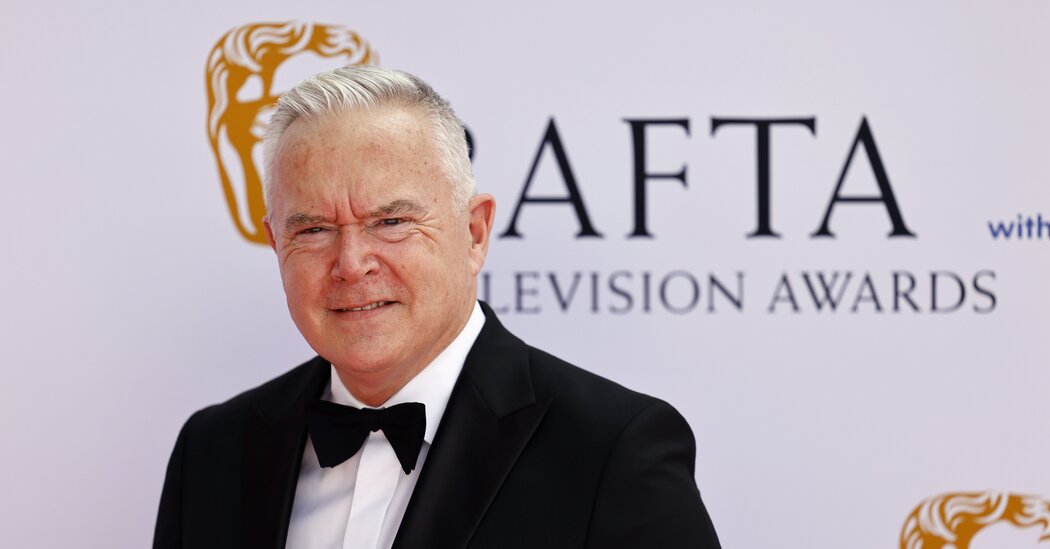Why Modi’s Radio Show Is Vital to His Popularity in India
Once a month, India’s prime minister, Narendra Modi, walks into a studio set up at his government bungalow and takes his seat behind a microphone. The air-conditioning is switched off to quiet its hum. Thick curtains maintain the room’s silence even from Mr. Modi’s favorite peacocks in the garden outside.
Then the prime minister begins his radio show, for which he has recorded over 100 episodes, with a usual greeting in Hindi: “My dear countrymen, hello!”
What follows — about 30 minutes of Mr. Modi playing on-air host to the world’s most populous nation — is one way he has made himself intimately omnipresent across India’s vastness, exerting a hold on the national imagination that seems impervious to criticism of his government’s erosion of India’s democratic norms.
On the program, Mr. Modi is both favorite teacher and empathetic friend, speaking directly to his listeners and selected callers. He offers advice on managing the stress of school exams, even as he reminds his audience that his educational background is as humble as theirs. He champions water conservation while expressing an awareness of the challenges of village and farm life.
His presence on the airwaves may seem anachronistic, more suited to the era of Franklin D. Roosevelt’s fireside chats, but it is crucial to understanding his overwhelming grip on India’s information landscape. At its core is a transformation of Mr. Modi’s image that will be on full display this week as President Biden hosts him for a state visit, part of a red-carpet effort to court India as a rising economic power and counterweight to China.
The radio shows, sliced into short clips and blasted through his party’s immense social media apparatus, accompanied by text and video, shape a persona wholly disconnected from the stoking of religious divides and the silence on sectarian violence that have marked his years in power. It is a softer Mr. Modi, served up for mass consumption, that counters his more partisan rhetoric in rallies and speeches.
This image, nurtured persistently, has made Mr. Modi immensely popular at home and helped rehabilitate him abroad after he temporarily became an international pariah two decades ago, accused of human rights violations over deadly communal riots and barred from entering the United States.
Off the radio airwaves, Mr. Modi has many avatars: yoga teacher, poet, tech champion, wildlife photographer, even holy man clad in colorful robes and headwear — what his party’s president recently called “the king of deities.”
But his role as on-air talker combines two of his greatest strengths. The first is his deep understanding of India’s grass roots, developed over decades as a foot soldier and evangelist of the Hindu right. The other is his populist mastery of storytelling for a digital media sphere where he can effectively communicate his government’s popular programs, from free rations to improved infrastructure, and make virtually any message go viral.
“On top of the system is Modi, whose communication is very carefully thought out, almost always positive, and always framed to present the indistinguishability of Modi from India,” said Joyojeet Pal, who studies political use of social media at the University of Michigan.
‘I Am There With You’
Each broadcast of “Mann Ki Baat,” which loosely translates as Conversations From the Heart, is scripted for a nation on the ascent, connecting the local with the national and the global. All the while, the program associates Mr. Modi with every positive happening, big or small, and every solution, tangible or spiritual.
On occasion, he talks about international events where India commands the spotlight, but he most often addresses issues of basic government services, including the delivery of some of life’s most rudimentary amenities, like piped water or toilets. From his more partisan pulpits, he blames India’s previous elite for denying the masses these necessities.
Water scarcity is a frequent subject. “As a responsible citizen and as a member of society, we will have to cultivate the habit of conserving every drop of water,” Mr. Modi said in one episode, before giving the example of a coastal village that has a “200-year-old underground water tank,” recharged with rainfall.
Another regular topic is pressures on young people, including exam stress in a country — this part is left unsaid — where students find too few job opportunities after graduating from a competitive education system.
“I cannot guide you on the tricks to obtain better marks because I consider myself an average student on such issues. I have myself never scored well in any exams in my life,” he said on the program. “But friends, I am there with you in your moment of crisis.”
A participatory sense is built into the show, whose agenda is set by his communications team and whose technical work is done by the state broadcaster. At the beginning of every month, the prime minister puts out a call on social media, where he has a cumulative 300 million followers across various platforms, for suggestions of topics for the next show. Listeners post ideas in response.
One of them, Chandrashekhar, wrote to Mr. Modi that he should address bribery, which remains “rampant in the lower levels of all government agencies in all states irrespective of the party in power.” Another, Ishwarchand, asked him to “kindly give attention” to dropout rates after primary school, and provided data about the problem.
A third, Pradeep Sahu, urged him to ask citizens to treat animals with kindness, to offer them food and water.
“If you request, everyone will listen to you,” he said.
From a shortlist prepared by his staff, Mr. Modi selects a couple of themes for the next show, according to officials involved in the process. And the work begins — of choosing the people he will speak with on the program, and then sending crews to film them for broadcast on YouTube and television.
During the pandemic, Mr. Modi used one episode to encourage citizens to get vaccinated.
“Come, let us visit a village and speak to people about the vaccine,” he told his listeners.
By phone, he asked two villagers, in a nonjudgmental tone, what was holding people back from taking the vaccine. Both told him messages were being forwarded on WhatsApp about side effects and dangers.
Mr. Modi responded by telling them about other villages where 100 percent of the adult population was vaccinated. “Rajesh-ji,” Mr. Modi told one of the villagers, “the only way to address this fallacy is convincing others by getting yourself vaccinated. You will do that, won’t you?”
“Yes, sir,” Rajesh said.
“Will you do it for sure?” Mr. Modi asked.
“Sir, yes, sir,” Rajesh said. “Talking to you made me feel that I should get myself vaccinated and mobilize others.”
With that, a leader who months earlier had been accused of inaction as bodies filled India’s crematories had rewritten the narrative into one of small victories at the local level that are a model for the world.
Laxmi Narayan, 51, a farmer in the southern state of Karnataka and a listener of the program, said he was put off by some of the divisive politics of Mr. Modi’s party. But he assigned the prime minister himself none of the blame, while crediting him for a range of improvements like better roads and ration delivery.
“I love Modi,” he said. “He has done good work for the farmers.”
Front and Center
It is not lost on Mr. Modi that radio is an unusual choice as the medium for his most regular form of communication.
“Your curiosity is natural: In this age when radio was fading into oblivion, why did Modi opt for the airwaves?” he said in the episode in November 2018.
His answer was anecdotal: In the 1990s, as a grass-roots worker in his Bharatiya Janata Party, or B.J.P., he stopped by a tea seller in India’s northern hills who was celebrating the country’s nuclear tests after hearing the news on the radio. That made him realize “this was a medium that was truly connected with the masses.”
A recent study found that 70 percent of Indians never listen to radio, and that those who do skew toward the more well-off. But what matters is what Mr. Modi can squeeze out of radio for an information system unlike any India has seen before, built by and for him, creating a propaganda deluge aimed at drowning out competing voices.
In his decade as prime minister, Mr. Modi has done away with traditional methods of information-sharing for the country’s top elected official. He has never held a full-fledged news conference; he dominates Parliament so thoroughly, with a large majority and a quick trigger to dismiss legislative sessions, that he speaks only when he wants.
Mr. Modi sets the agenda not just by choosing what to elevate — but equally by deciding what to keep a distance from, and what to let his lieutenants and digital army do for him.
He has stayed mostly mum, on the radio and elsewhere, as his right-wing supporters have increasingly turned to vigilante violence in enforcing their idea of Hindu supremacy, human rights organizations say. Mosques and churches have been attacked, interfaith couples have been dragged out of trains, and mobs have lynched Muslim men accused of transporting the meat of cows, which many Hindus see as holy.
The result is an environment of persistent combustibility in a nation with more than 200 million people who belong to religious minorities — many feeling alienated, humiliated or directionless.
Mr. Modi has helped normalize the spread of hate not just “by remaining silent, but also rewarding people who say stuff like that,” said Shivam Shankar Singh, a former B.J.P. campaigner. The prime minister has at times come to the support of right-wing vigilante groups that have faced the threat of punishment.
“There are people whose entire political career is based on the fact that they dog-whistle, and they keep rising,” Mr. Singh said. “Almost nothing can happen without the boss at the top.”
Mr. Modi has also largely bent the news media to his will, dangling the incentives of government advertising and applying the pressure tactics of tax raids and arrests. This is particularly true of broadcast media — large parts of the nightly news consist of anchors declaring Mr. Modi’s greatness and defending him against any criticism.
Radio, as a medium, brings the credibility and authenticity of the old, while the actual dissemination of his message happens on social media. The audio and video clips are dubbed and broadcast in 22 Indian languages.
Increasingly, the monthly show has become an occasion. In villages and government ministry auditoriums, Mr. Modi’s supporters hold listening events, sitting in rapt attention in large numbers and then digitally sharing images and videos of the gathering.
To mark the 100th episode this spring, the B.J.P. said it was arranging “at least 100 venues” in every voting constituency across the country for people to listen.
Mr. Modi’s show is usually broadcast on the last Sunday of the month. June’s program aired earlier to make way for this week’s special occasion.
“All of you know, I’ll be in America next week, and there the schedule is going to very hectic, so I thought I’d talk to you before I go,” Mr. Modi said in the episode. “What could be better than the blessings of the people, your inspiration, giving me energy?”
He then signed off with some advice.
“It is the season of rains, so take good care of your health, have a balanced diet and stay healthy — and yes, certainly do yoga!”


